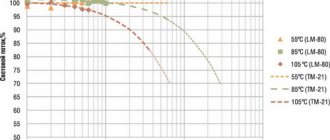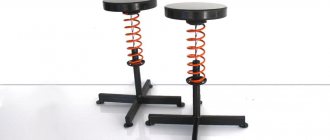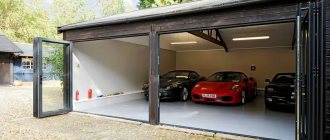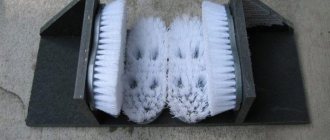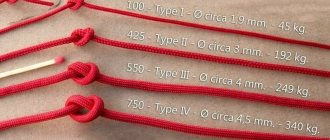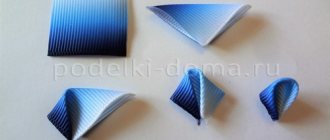Assembly of the structure
Assembling the radiators together is not difficult, but you should first purchase new intersection gaskets or use instead an asbestos cord impregnated with graphite powder, previously diluted in drying oil.
Since the temperature inside the boiler can exceed +600 degrees, it is worth taking care of the gaskets in advance. The tightness of the entire structure depends on their quality and strength.
The radiator assembly sequence is as follows:
Nipples equipped with right and left threads are screwed into each section. Asbestos cords are wound around them.
Sections are connected in pairs by alternately tightening the nipples
It is important to make the same number of turns with the key so as not to cause distortion. All sections of the cast iron radiator are connected in the same way. The return and supply pipes should be connected diagonally, closing unused holes with plugs. There should be a right-hand thread on one side of the riser and a left-hand thread on the other
If this does not work out, then you need to screw on the nipple, and on it a coupling with a drive
On one side of the riser there should be a right-hand thread, and on the other, a left-hand thread. If this does not work out, then you need to screw on the nipple and the coupling with the drive on it.
Heat exchanger for a boiler made of cast iron battery
Many craftsmen, in order to save money on heating in autonomous heating systems, install heat exchangers in furnaces or boilers. Their main task is the transfer of heat that is generated during the combustion of solid fuel.
For a design to be truly effective, it must have the following characteristics:
- The larger the heated surface area, the more heat it can transfer.
- The material from which the heat exchanger is made must have high heat transfer.
- The device must be resistant to temperature changes.
As practice shows, the best and cheapest option is to assemble a heat exchanger from a cast iron battery. It is suitable for the following reasons:
- From the radiator sections you can assemble a device with the required heating area. If you use old cast-iron batteries, you first need to disassemble and wash them, and then, knowing how to assemble a cast-iron battery, make a structure of the required length from it.
- Cast iron has sufficient thermal conductivity and is at the same time resistant to the aggressive environment that forms inside the furnace.
- Sufficiently wide channels of the cast iron battery are able to freely pass water from the heating circuit, which requires high movement speed to effectively heat the house. To ensure such circulation, it is necessary to create a significant temperature difference between the incoming and outgoing water. The larger it is, the faster the coolant flows through the network.
When assembling cast iron heating radiators with your own hands to mount a heat exchanger from them, you need to replace the gaskets with special asbestos threads, pre-impregnated with graphite lubricant.
Depending on the size of the stove, you can use several sections of cast iron radiators or even arrange them in two rows. Assembly is carried out in the same way as for connecting to the city heating network. For this, adapters, bends and corners are used, and after connecting all sections, the structure must be checked for leaks. To do this, water is supplied to it under pressure.
Heater made of battery and heating element
When it comes to deciding how to heat a room: electricity or solid/liquid fuel, consumers are confused by both options because of their high cost. Therefore, many are interested in the question of how to make a heater from a cast iron battery so that it is cheap and does not require special care.
Craftsmen have long been using the advantages provided by installing a heating element. Its main merit is that, with proper connection, it can easily heat small rooms, for example, a greenhouse, garage, workshop or chicken coop, without additional heat sources.
A cast iron battery with a heating element is, in fact, an effective way to autonomously heat a small room or use it as an additional heat source in an apartment in a city heating network.
A heating element is a metal cylinder with a spiral installed inside. The walls of the tube do not come into contact with the spiral due to insulation with a special filler. Installed in a heating device, such a homemade heater made of a cast iron battery has the following advantages:
- This is a reliable design, completely safe for human life.
- This device has high efficiency.
- They are simple and durable to use.
- Heating elements are almost invisible, as they are installed directly into the heating system.
- Since they are equipped with a thermostat, they help save energy resources.
- The amount of electricity it consumes is significantly lower than that of conventional electric heaters, boilers or underfloor heating systems.
- To make such a heater from a cast iron battery with your own hands, you do not need any permits. The heating element is simply mounted into the heating network pipe.
Even a person far from electrical work can install and connect the heating element. As a rule, they are sold complete with parts for installation and protection, control devices and elements for connecting to the electrical network. The heating element is simply screwed into the radiator socket and plugged into the outlet.
It should be remembered that the heating element must be installed in a horizontal position. You can turn on the device for heating the room when there is coolant in the system.
To control safety, the heating elements are equipped with double overheating protection. Control sensors are located both inside the device and outside.
Modern heating elements for connecting to cast iron radiators are equipped with two operating modes, which allows them to be used as the main source of heating, and then they are turned on at full power, or as an emergency or periodic one. In the latter case, it is beneficial to use such technology, for example, in dachas where people do not live permanently, but care must be taken to ensure that pipes and radiators do not freeze.
To make efficient heating from cast iron radiators with your own hands, you need to choose a heating element of suitable power. To do this, a calculation is made taking into account the required heating of the coolant and its quantity in the battery.
Fan heater from power supply
Using an old power supply from a computer in which the fan is working normally, we will make a small fan heater from it.
All parts are placed inside the power supply housing, so such a heater will look very compact. The collapsible housing will allow you to repair the fan heater yourself if a part burns out. Fan heater diagram
The internals of the power supply are removed with the exception of the cooler. To power the cooler, you need to place an additional small 12 V power supply into the device body. It can also be used outside the fan heater body, ensuring its reliable connection with the cooler. Such a small power supply can be bought at any computer store. Nichrome wire is used as a heating element, which is spirally wound on a piece of fiberglass. The length of the wire should be about 3 m. The ends of the wire are rigidly attached to the PCB using bolts. They are supplied with power from a cable that will be plugged into a household outlet.
To ensure safety, use a thermal fuse that is soldered into the cable near the nichrome spiral. It is a miniature device that is triggered when the maximum temperature is exceeded according to the principle of a bimetallic plate. This usually happens when the cable temperature is more than +70 degrees. This way you will protect the cable from overheating and prevent its possible fire. The thermal fuse is connected in series to one of the cable cores.
After rigidly fastening all the parts, the homemade fan heater is closed with a lid and plugged into the network. It is being checked. If the appliance is functioning normally, protect surrounding objects from possible fire. To do this, install the assembled device on a fireproof stand or at least on a wooden piece. Avoid keeping flammable items near the operating device.
A do-it-yourself heat gun can be made from affordable materials that any person can find. Missing parts can be purchased at the market or asked from friends. In any case, such a rational approach will allow you to save a lot of money.
Types of heaters
A home craftsman who wants to acquire a homemade “hot water bottle” can choose from several options:
Oil
It is a container equipped with a tubular electric heater (TEH) and filled with oil.
The main element of the heating element is a spiral made of nichrome or other material with high electrical resistance, which begins to heat up when an electric current is passed through it. The spiral is placed in a copper tube filled with sand.
The oil removes heat from the heating element, distributes it over the surface of the body and, in addition, serves as a heat accumulator (after a power outage, the device continues to heat the surrounding air for some time).
Steam-drip
In its design, a vapor-drip heater is very similar to an oil heater, only water vapor is used as a medium that distributes heat. It is formed from a small amount of water, which is poured into the body.
This solution provides two significant advantages:
- When freezing, the vapor-drip heater will not burst, since water occupies only a small part of its volume.
- Steam is an extremely capacious heat accumulator. More precisely, not so much steam as the evaporation process: it is during the transition from liquid to gaseous state that water accumulates a large amount of thermal energy, which is returned when steam condenses on the walls of the heater.
Having transferred heat to the body of the device, the condensed steam in the form of water flows to the lower part, where the heating element is installed. The power of the heating element and the volume of water are selected in such a way that rupture of the heater by steam pressure is excluded.
Due to the fact that the device body is hermetically sealed, its internal walls do not rust due to high humidity.
Candlestick
A candle flame is known to emit not only light, but also some heat.
Only it usually evaporates to the ceiling in the form of convective air currents and is “smeared” over the entire area of the room.
Why not place a heat trap above the candle? We will tell you what it is in the next section.
Infrared (IR)
Any substance with a temperature different from absolute zero emits “thermal” electromagnetic waves, which are called infrared.
The intensity of this radiation is directly dependent on the temperature of the substance. Water and oil radiators also emit IR waves, but in very small quantities because their surface is relatively cold.
To turn a metal object into an IR emitter, it is enough to heat it to a red glow temperature. If you use special materials, for example, graphite, then quite noticeable “heat” waves can be achieved at relatively low temperatures.
Knowledge of these subtleties will help us make our own IR heater, which will give us heat directly, that is, without the participation of air as an intermediary.
Other types
Since electricity is not available everywhere, structures running on gas or solid fuel have the right to life. The latter include potbelly stoves.
Heater in plinth
The premises are heated, in addition to traditional stoves and radiators, by electrical devices. An infrared lamp is an unusual heating device that is used in various areas of human activity.
What is infrared heating
Every body whose temperature is higher than surrounding objects gives off heat to them. This happens in the following ways:
- through places of contact of surfaces;
- through a liquid or gas from their contact with a warm body;
- electromagnetic wave radiation.
If there are no contacts for heat transfer, then the heated body is an infrared heater. It emits invisible rays in the infrared range, which are the same as light rays. Their spectrum lies between short radio waves and the red light visible to the human eye.
The infrared spectral region is divided into short, medium and long wavelengths. At low temperatures, the radiation occurs in the infrared range, the rays are invisible to the eye, and the object appears dark. Heating causes the rays to shift into the visible spectrum. The body changes color from dark red initially to white when heated to maximum.
Design features and operating principle
An IR lamp is an autonomous heater that heats surrounding objects with infrared rays. The simplest design has a tungsten filament inside a glass bulb. Power – 50–500 W, voltage – 220 V.
The cartridge is standard, but for some models a different type is used. The high temperature to which the lamps heat up requires ceramic sockets - plastic ones melt.
IR lamps are produced in the following types:
- with mirror coating in silver, blue or red;
- without a mirror coating - similar to light bulbs, but emit infrared rays;
- in the form of luminous halogen heating elements - more productive, capable of heating a large area.
The mirror coating of IR heating lamps serves 2 purposes: it increases efficiency and directs the flow of rays in the desired direction. Without it, the lamp is equipped with an external reflector, similar to halogen IR heaters.
An infrared heating lamp works on the principle of the sun. Its rays heat not the air, but objects, animals, people. Infrared radiation is instantly absorbed by them and converted into thermal energy.
An IR lamp works similarly:
- connect to the electrical network;
- the coil heats up;
- infrared radiation occurs.
The brightness of the glow is used to judge the properties of the devices. Strongly luminous ones produce short waves that penetrate further and are capable of heating large areas. Long wavelengths are less bright, with more gentle heat.
IR radiation does not cause any harm to living organisms, including humans, if used wisely. Therefore, some infrared lamps are used for medical purposes.
Advantages of IR heating
IR heating lamp has advantages:
- Completely silent. The speed of the rays is similar to light, there is no need for fans like heat guns.
- Efficiency is almost 100%. Only physical laws prevent the achievement of the maximum indicator.
- Installation does not require qualifications. The light bulb is screwed into the socket and the switch is pressed.
- Spot heating is possible. It is required for birds and animals kept in confined spaces.
- Compact sizes. Dimensions are similar to incandescent lighting lamps. They can be placed under the ceiling without taking up room space.
- Absolutely environmentally friendly. Oxygen is not burned and no harmful gases are released.
Warm air does not accumulate under the ceiling, as with convective heating. There is no need to force it back down when installing ceiling fans.
The use of IR heaters allows you to save heat energy. The temperature of the main system can be lowered by several degrees, but the feeling of warmth remains unchanged.
Scope of application of heat lamp
The properties of infrared lamps allow them to be used in various areas of human activity.
Household use
Rooms are heated with IR lamps. They are often used as an auxiliary heating device if the main equipment is not working well.
Short-wave or medium-wave devices create a comfortable environment in the room in a few seconds.
Infrared heaters solve problems that are beyond the capabilities of other types of devices. With their help, in winter they create a thermal barrier that protects against cold radiation from windows, stained glass windows, and large domes.
At the same time, such designs eliminate freezing. IR heaters melt snow on porches, paths, and garage exits.
greenhouses
Infrared lamps heat greenhouses well. Single light bulbs can also be adapted by hanging them above the plants. Either option creates conditions similar to those that arise with solar radiation.
IR lamps compensate for the lack of light and heat, but use requires caution. If the power and duration of irradiation is exceeded, the plants may die.
Animal breeding
Infrared lamps have long been used in poultry farming. Little chicks need warmth. The young gather under the lamp and warm themselves.
Similar devices are used for animals. When newborns are separated from their mother, they are warmed with low-power infrared lamps. To enhance the effect, cages where animals are kept are covered with reflective material.
During severe frosts, rural residents turn on IR lamps to heat poultry houses, otherwise even adult birds may freeze. Similarly used in winter in relation to nutria, rabbits and other animals.
on this topic:
Treatment of people
In medicine, devices with infrared lamps have long been used. They are also used for home treatment. Infrared radiation, affecting human skin, accelerates blood circulation and metabolism. The person’s well-being improves.
Use is recommended for the following diseases:
- colds: acute respiratory infections, rhinitis, tonsillitis, otolaryngological diseases;
- for pain and muscle spasms;
- arthritis in the joints;
- hypertension.
Contraindicated for use in cases of cancer, tuberculosis, and purulent inflammatory processes. Not recommended for pregnant women, people with chronic lung and heart diseases.
Features of choosing the appropriate option
When choosing the type of emitter, take into account:
- what room is to be heated;
- for temporary or permanent use;
- what needs to be warmed: people, animals, plants or equipment.
DIY assembly
So, all the starting materials have been prepared. In addition to them, you will need some plumbing tools and equipment, which will not be difficult to find. For example, if you don’t have your own, you can borrow a welding machine from your neighbor in the garage (you still don’t plan to assemble and test the product in your apartment, do you?).
Homemade heater diagram
Do-it-yourself assembly will be carried out mainly locally; you just need to pay attention to the following individual points:
- for better oil circulation, heating elements are placed in the lower part and on the sides; they should not come into contact with each other or with the body;
- if the shape and volume of the body do not sufficiently provide natural convection of liquid, you should resort to equipping the structure with a pump and electric drive;
- for emergency drainage of oil and pressure relief, it is recommended to provide appropriate openings with valves;
- the housing must be grounded;
- Before use, it is recommended to thoroughly test the device for functionality.
As you can see, constructing an oil heater yourself is not so difficult. If you take the utmost care in designing and manufacturing, it will respond to you with all its warmth in inclement weather. If assembling the device seems too complicated, you can always choose an oil radiator in the store.
Oil radiator from MS-140 battery
As a rule, oil heaters are used as additional heat sources if the central heating “cannot cope” in full. Sometimes they are used to heat small rooms where heating is not installed.
In this case, knowing how to make an oil radiator from a cast iron battery, you can save a lot on both the purchase of a new device and its operation.
Depending on the power required from the heater, its manufacture may require from 1 to 4 heating elements. As a rule, one or two heating elements are enough to use such an oil radiator in everyday life. To work you will need:
- Classic cast iron battery, for example, brand MS-140.
- Heating element of suitable power.
- Technical oil, but according to craftsmen, the best option would be to use electrical oil, which is poured into transformers. It is resistant to high temperatures and therefore safer. The only drawback of transformer oil is its high cost.
The modern market of thermal technologies offers heating elements specially adapted to work in the MS-140 cast iron radiator. It is better to look for and buy a ready-made device than to try to calculate on your own what power, shape and size of the device will be required.
It is very easy to make an oil cooler by following the steps in the right sequence:
- The heating element is installed in the lower manifold of the cast iron battery from the end part.
- The rear wall of the structure is grounded.
- Move the oil drain hose and ball valve downwards. This is important because if the media drains, the heavy battery case filled with oil may be difficult to tilt.
- A plug is placed on the upper end hole above the heating element, and the hole above the tap is closed with a plug with a Mayevsky tap.
When heated, oil expands greatly and will require space inside the cast iron radiator, so fill the container only 80-85%.
Size calculation
Making your own pipe heating device is not very difficult. But there is one important point here - to correctly calculate the dimensions of the device. After all, such an indicator as heat transfer will depend on them.
Required indicators
The calculation is not easy, because it requires some criteria for the premises itself. For example: glazing area, number of entrance doors, what windows are installed, whether the floor, walls and ceiling are thermally insulated.
It’s difficult to take all this into account, so there is a simpler option that takes into account only two indicators:
- area of the room.
- ceiling height.
How can this help when assembling a homemade heating device? To do this, you will have to make a comparison with the usual MS-140-500 brand. The heat output of one section is 160 W, volume is 1.45 liters. What does this give us?
You can determine exactly how many sections will be needed if you use a cast iron device. The total volume of coolant that will fit in one battery is determined from the number of sections. And knowing this number, you can approximately determine the volume of the pipe radiator.
The thing is that the thermal conductivity of steel is 54 W/m*K, and that of cast iron is 46 W/m*K. That is, a small downward error will not have any effect on the quality of heat transfer.
Calculation example
Conventionally, we will assume that an eight-section cast-iron heating device corresponds to the above-described ratio. Its volume is 8x1.45=11.6 liters.
Now we can calculate the length of a pipe with a diameter of 100 mm, which we will use to assemble a homemade battery. The standard cross-sectional area of the pipes is 708.5 mm². We divide the volume by the cross-section, we get the length (we convert liters to mm³): 116000:708.5= 1640 mm. Or 1.64 m.
A slight deviation in both directions will not greatly affect the heat transfer. Therefore, you can choose either 1.6 or 1.7 m.
How the device works
A water fan heater consists of a housing in which a heat exchanger and a fan are installed.
The fan, thanks to its blades, creates an air flow that, going around the heat exchanger with circulating hot water, heats up and, accordingly, increases the temperature in the room. The main advantage of this device is low power consumption, with fairly high efficiency, ease of maintenance and the absence of parts, except for the fan, that can break. The highest fire safety makes the water fan heater an indispensable heating device for use in areas of increased explosion and fire hazard, and in places where it is not economically feasible to install other heating systems, for example, at a service station, gas station or car wash.
Using radiators
Selection by heat transfer
So that the radiators cope with their task, i.e. provided a comfortable microclimate, we need to purchase a sufficient number of such devices for one room.
And here you can’t do without calculations, instructions for which are given below:
The number of heating points must correspond to the volume of the room
- Power consumption depends on how much volume needs to be heated. Therefore, we need to multiply the area of the room by its height (in meters). So, for a room with an area of 25 m2 with 3 m ceilings, the required value will be 75 m3.
- Next, we multiply the volume by the standard value of 41 W/m3. This value determines the heat consumption per cubic meter of living space for central Russia. In our case, the total volume of heat will be equal to 75 * 41 = 3075 W.
For cast iron models, heat transfer is calculated per section
System installation
Installing heating radiators with your own hands is a rather complicated process, but this task is still feasible for most craftsmen.
We begin the description of the algorithms with instructions for installing electrical models:
Electric radiator under the window sill
As a rule, stationary electric heaters are mounted on the wall. In this case, for connection, either a socket located in the immediate vicinity of the device or hidden wiring for a permanent connection is used.
- In order for heat flows to be distributed evenly in the room, the battery must be positioned according to certain rules. It is extremely important to maintain the size of the gaps: from the floor - about 100 mm, from the window sill - 80 - 100 mm, from the wall to the back surface of the battery - 30 - 60 mm.
- If the radiator is completely covered by a window sill board, then it is advisable to make holes in it for the release of warm air, covered with plastic grilles. Otherwise, the bottom of the window glass will constantly accumulate condensation as the coldest area in the room.
- The installation of an electric radiator itself is not difficult. All we need to do is install the mounting brackets on the wall and hang the battery on them.
Water heating systems
With water heating it is much more difficult:
First you need to select a connection scheme. This determines how efficiently heat redistribution will take place. Possible schemes are presented in the images in our article, so during installation you must keep this information in mind.
Connection diagrams and heat losses during their implementation
- Secondly, we need to lay heating pipes. As a rule, steel or polymer products with good heat resistance are used for this purpose.
- After this, we install the radiator itself on wall or floor brackets. The heaviest batteries are made of cast iron, so the most powerful fasteners are used to secure them.
- Finally, you need to connect the radiator to the pipes. Most often, threaded connections are used here, which must be as reliable and tight as possible.
Connection fittings
After completing the installation work, it is worth testing the system
If you have not done this, then it is important to follow the announcements about the beginning of the heating season: only the first launch of a test portion of the coolant will finally demonstrate how high-quality the installation was
Advantages and disadvantages of oil heaters
Among electric heating devices, oil ones are the only ones that are called electric radiators. Oil heating has many advantages:
- does not dry out the air;
- radiators transfer heat mainly through thermal radiation;
- has a safe design;
- the surface almost never heats up above 50-60 oC;
- easy installation and management.
All this is true, but there are also disadvantages. The main thing is a fairly large inertia. Oil, which serves to transfer heat, has a high heat capacity. And until it warms up, the air will not begin to warm up. But this same property allows you to smooth out temperature differences when turning on/off.
The biggest problem is high inertia and low efficiency: too many heat transfer stages
The second disadvantage is that the safety and durability of the work depends on the quality of workmanship. An incorrectly designed structure can simply burst when heated, the seams are poorly sealed, and oil will leak. Therefore, buying cheap but unknown brands is a risky business.
How to choose a fan heater
- The majority of heat fans are made from plastic. The main requirement for the body is strength. This ensures both durability and safety of use.
- The required power is calculated based on the area of the largest room in which the fan heater is supposed to be installed. It is calculated at the rate of 1000 Watts/10 sq. m.
- You need to choose a mobile or stationary device based on your needs. If heating equipment is required in several rooms, a portable fan will be needed. Stationary models are more powerful and create less noise.
- The noise level also depends on the structure of the fan. The “quiet” type is considered tangential. The axial type of fan does not have this advantage.
- Don't forget about safety. Shutdown functions in case of a fall, cooling in case of overheating, a safe heating element - these parameters will protect users from fire.
- Fan heaters use two types of ceramics: glass and metal. Of these, preference should be given to glass.
- The maximum number of operating modes in modern fans is 3. This number of modes makes the operation of the fan-heater comfortable and economical for users.
Criteria for selecting the required materials
Since a homemade device is assembled from units that have already been used, first of all it is necessary to assess the condition of the pipes
Particular attention will need to be paid to their walls. Their thickness should be several millimeters
If corrosion occurs, it is undesirable to use such pipes or be sure to eliminate all defects before use. All rust will need to be thoroughly removed from the metal with a brush, and then covered with an anti-corrosion compound so that the problem does not arise in the future during operation.
For production, pipes with a diameter of approximately 12 cm are usually used. Sheet metal of the appropriate size is used to plug the ends.
To make bypass channels and fittings, you will need to use pipes of a smaller diameter, which can eventually be connected to the heating system. The threads on the fittings are pre-cut, for this reason the appropriate equipment is required - a “drill” (for creating external threads) and a tap (for cutting internal threads).
A DIY oil radiator can be made portable. In this case, small pipes will be used, and oil will be used as the coolant. Heating elements are used instead of heating elements. The choice of this component depends on the area of the room that needs to be heated. Home craftsmen often install an additional thermostat on such a device, which periodically turns the heating element on and off.
For good fastening to the wall, you will also need strong hooks that can support the weight of the resulting unit. To create a more aesthetic appearance, they can be purchased in the store. But if you don’t want to spend additional money, then strong reinforcement bars that need to be fixed in the wall are also suitable. It is advisable to first paint the hooks in the same color that was used to paint the heating device - this way the fittings will become invisible.
Assembly features of some types of fan heaters
There are several types of fan heaters, each of them, quite naturally, has its own characteristic pros and cons. Before you start assembling the fan yourself, you should familiarize yourself with some of the features of the device.
Fan heater
Assembling a simple heat fan with your own hands is not difficult for a home craftsman. Some of the necessary parts can be found in stocks of old equipment stored in a closet or garage. You can assemble a heater with your own hands using an old computer system unit. For this you will need:
- Textolite sheet measuring 20x30 cm.
- A couple of meters of nichrome wire with a diameter of 0.2-0.3 mm.
- System unit (parts, except the cooler, are removed from the unit).
- Power supply 12V.
- Thermal fuse for the heater is designed to turn off at temperatures above 70°C.
- Cable, regulators, switches, fasteners, electrical tape or heat shrink tubing.
The design of the heater is very simple and assembling it yourself is not difficult.
- Parts are cut out of fiberglass to make a frame with slots for installing a shadow (nichrome spiral).
- The nichrome thread is twisted into a spiral (for these purposes, use a drill or screwdriver operating at slow speeds, with a fixed rod with a diameter of 2-3 mm).
- The spiral is installed in the frame and secured, power is connected to the points where the ends of the spiral are attached, and a thermal fuse is mounted into the gap in the power wire.
- The frame with the spiral is installed in the system unit.
- The 12V power supply is connected to the cooler.
- The housing is closed, installed on a stand made of dielectric material, and the operation of the heater is checked.
An economical option is a water fan heater. In this case, the heating element is a heat exchanger made independently from a copper pipe or a used car radiator. The coolant to the heat exchanger comes from central heating or individual heating pipes, and electricity is consumed only to ensure the operation of the fan. It is recommended to install such a fan heater in the heating system on the return pipe. When installed on the supply side, a running fan greatly cools the pipe and the coolant enters the heating radiators below the required temperature.
Heat gun
Making a heat gun with your own hands is quite simple. A heater of this type is used for quickly heating and drying walls, floors, damp cellars and during certain types of construction work. To make a mini gun, you can use some parts of unusable household appliances, and buy the missing ones.
You will need the following list of materials:
- Motor and impeller (suitable for a broken vacuum cleaner or kitchen hood).
- A spiral from an unnecessary electric stove is used as a heating element.
- A pipe with a diameter of 150 mm and a wall thickness of 3-5 mm can be made independently from sheet metal.
- Thermal relay that opens the circuit when overheating, switch,
- Asbestos sheet.
- Metal grate.
- Cable and fastening materials (rivets or bolts with nuts).
Assembly is carried out in several stages:
- The electric motor and fan are attached at the end of the pipe.
- Strips are cut out of asbestos and a grid is assembled onto which a heating coil is attached (ceramic insulators can be used for these purposes).
- The resulting heating element is attached to the end of the pipe opposite to the fan.
- The motor and coil are connected to the switch. The scheme provides for a separate connection.
- Metal protective grilles are installed at both ends of the pipe.
- A mobile or stationary stand is made from available materials that are resistant to temperature influences.
Electric fireplace
A homemade fan heater is used as a heat source for an electric fireplace. It’s easy to make a portal for a fireplace with your own hands from plasterboard. To do this, install a frame from a metal profile of the required configuration and cover it with sheets of plasterboard, after which the outer surface is decorated using facing materials. A structure is installed inside the portal that simulates the burning of wood or coal (finished products are equipped with lighting)
It is important to provide a hole in the structure in advance for laying the cable
Making your own infrared heater
Modern IR emitters for heating homes are reliable, practical and have good efficiency. Such devices emit infrared radiation, which, without interacting with air, contributes to the rapid heating of various surfaces in the room. Thus, they effectively convert electricity into thermal energy.
The most affordable option for home assembly is an economical film heater, the basis of which is a heating film.
To work, you will need to prepare the following materials and tools:
- two identical pieces of glass,
- aluminum foil,
- sealant,
- paraffin candle,
- epoxy resin glue,
- electrical cord with plug,
- candle holder,
- soot cleaning sticks,
- sponge for cleaning glass surfaces.
The infrared heater is assembled with your own hands according to the following scheme:
- The glass is thoroughly cleaned of dirt and degreased.
- A conductive base for the heater is assembled. Using a candle, soot is applied to the back side of the glass blanks, acting as a kind of current conductor. Before starting the procedure, the workpieces are slightly cooled.
- Along the perimeter of the workpieces, the surface is cleared of soot using chopsticks to obtain an even edge 0.5 cm wide.
- Strips of width equal to the area of the conductive glass base are cut out of foil. They will be used as conductive electrodes.
- One workpiece is placed on a flat surface with the smoked side up, and a thin layer of glue is applied around the perimeter. Foil strips are applied to the glued surface with a slight shift beyond the edges of the workpiece.
- It is covered with a second piece on top and, accordingly, the smoked side down is pressed to set the glue. All joints are carefully treated with sealant.
- Checking the power of the finished structure. If the power indicator does not exceed 100 W per 1 sq. m of room, then the heater is connected to the network using a conductive wire and plug.
A multimeter measures the resistance of the heater's conductive base. To calculate power, use a simple formula: N = U×U/R, where
N – power, U – mains voltage (220 volts), R – resistance.
For example, R – 20 Ohm, then N = 220×220/20. The result is 2420 W. This power is enough to heat a room of 25 square meters. m.
Directional heat gun
A heat gun of our own production has enough power to easily heat a garage, utility room or office in the house.
For assembly you will need:
- a piece of plywood 16 mm thick;
- fan (duct);
- temperature and speed controllers;
- PBEC heating element (2.2 kW);
- fasteners (clamp, bracket, studs, nuts, washers);
- wheels.
We cut out a rectangle of approximately 47 cm x 67 cm from plywood, sand the rough edges and corners.
The plywood base was not chosen in vain: it is light, flat, and most importantly, it does not conduct electric current, which is important in the event of force majeure circumstances
We connect two central parts with a coupling - the fan and the heating element. We fix the resulting structure on a plywood base using a bracket and a plumbing clamp.
We select fasteners in such a way that they firmly fix the elements of the device and do not cause them harm. For example, self-tapping screws are perfect - they do not destroy plywood
Self-tapping screws (16 mm) are suitable for fastening. We install a temperature sensor (for example, TG-K 330), which is necessary to control the temperature, next to it there are two more devices - for adjusting the speed and temperature.
When connecting the parts of the fan heater to each other, do not forget about the safety of the device: the connection points of wires and cables must be insulated
Pulsar 3.6 is suitable as a thermal regulator. After installing all the necessary devices and parts, we connect them according to the diagram.
Device control circuits can be found in specialized literature, instructions for devices such as an electric fan, or on specialized websites
For ease of use, we screw wheels to the plywood base.
Small rollers screwed on the bottom side make the homemade fan heater more convenient to move around the room, especially if it is heavy.
Well, that’s all - the homemade heat gun is ready.
Try to place the device parts in such a way that, if necessary, it is easy to disassemble each of them and replace failed elements
Like any homemade fan heater, this device has disadvantages. For example, when the device is stopped, the voltage on the heating element remains, and this is quite dangerous, since overheating occurs and an emergency situation is possible. The situation can be corrected by installing a relay to timely turn off the power supply to the temperature controller. Another disadvantage is inadequate heating of the room, but this is a disadvantage of almost all stationary fan heaters.
Homemade heaters: pros and cons
As a rule, heat generators made by hand are copies of devices produced industrially. These copies, with rare exceptions, are inferior to the originals in many respects, but due to certain circumstances, the consumer often chooses a home-made unit.
“Pros” of using homemade devices:
- relatively low cost (when made with your own hands and using improvised means);
- the ability to assemble a unit of the required dimensions and manufacture a housing with the desired strength characteristics, up to vandal-proof design.
The main argument against it is the uncertain degree of safety of homemade heating devices during operation, which is fraught with unpredictable negative consequences not only for the owner of the unit, but also for others.
This argument is due to many factors, and its validity is confirmed annually by numerous fires caused by homemade air heaters used in violation of the Decree of the Government of the Russian Federation. “On the fire safety regime” No. 390 of April 25, 2012 (as amended on November 18, 2017)
Excerpt from the Resolution on the fire safety regime in R.F. banning the use of homemade heaters
As for the secondary arguments “against”, they are as follows:
- lack of legitimate manufacturer guarantees;
- uncertainty of some characteristics of homemade devices;
- low aesthetics and degree of automation of handicraft units.
If familiarization with these arguments still does not prompt you to purchase a factory-made heater in a store, let’s consider how to make a heater yourself so that the likelihood of an accident when using it is as small as possible.
Selection of materials
As is clear from the above, to obtain a homemade heater you will need to get the following components somewhere:
- frame;
- oil;
- heating element;
- mobile stand;
- control and automation devices.
As a housing, you can borrow an old radiator from a central heating system, sheet or sectional. A car, or any similar product, the design of which will allow fluid to circulate inside naturally or artificially (using an electric motor), is also quite suitable. You can also make a closed loop from steel pipes with your own hands.
The main thing is not to forget that an indispensable condition for the normal functioning of the system will be to ensure the tightness of the housing. If the liquid begins to leak, then it is unlikely that such a homemade device will bring more benefit than it will cause trouble.
As for the oil, firstly, its quantity should be based on the calculation
85% of the body volume. The rest of the cavity is filled with air. This 15% area is maintained so that during operation the oil does not crush the housing due to thermal expansion.
Secondly, the quality characteristics of the liquid must satisfy at least two criteria: purity and heat resistance. Dirt and impurities will shorten the life of the heating element by causing scale to settle on it. A decent temperature of the heating element indicates that you should select technical oil of the appropriate brand. A suitable option would be, for example, a transformer.
The number and characteristics of heating elements are selected depending on the required power of the heater (and taking into account the overall dimensions of the housing). Conventionally, we can assume that to create a comfortable atmosphere in a room with normal ceiling heights, you need
1 kW per 10 sq. m. For rooms with high ceilings, poorly insulated, located in cold areas, etc., several times more powerful products are needed.
Of course, the capabilities of the power supply network in the place where you plan to use the hand-made device must also be taken into account.
In terms of durability, it is also important to consider possible combinations of metals of the heating element and the body. For example, it is not recommended to use heaters with a magnesium anode
combine aluminum and regular steel (not stainless steel) with copper.
Installing a heating element into the heater body
Since the structure, in all likelihood, will have an impressive mass, a mobile platform on wheels, if one is planned to be included in a home-made device, must withstand the load placed on it. It can be made, for example, from rolled steel - angles, channels, etc. materials.
Switches or a rheostat are selected in accordance with the total power load of the device.
A bimetal plate (taken, for example, from an old iron) should be used as a thermostat. When choosing a setting for it with optimal temperature characteristics, you need to proceed not only from considerations of energy savings, but also from the fact that excessive heating can cause the pressure inside the case to increase to too high a level.
To better guarantee safety, an additional thermal fuse can be provided. Or a similar switch that triggers at a certain pressure.
Types of heaters
Depending on the method of heat transfer, electric and water heaters are distinguished.
Electric heater
The design of such a device implies the presence of steel filaments or spirals of metal wire. When current passes, metal elements offer a certain resistance to it, which leads to the conversion of electrical energy into thermal energy.
Electric heater designAmong the advantages of electric heaters we note:
- Ease of calculating the required power of the device.
- Availability and relatively low cost.
- Easy to install and connect.
- Small pressure drops.
There are also a number of disadvantages. Thus, a large inertia is created in hot metal threads. This can lead to overheating of the device and even its failure. Improper handling of the device often causes a fire. To counter this phenomenon, electric heaters are equipped with additional protection against overheating.
Another negative point is low efficiency. The operating costs of electric heaters are an order of magnitude higher than those for water devices, in which electricity consumption is minimized.
We recommend that you read: Air conditioner pump
Water heater
Due to numerous advantages, heaters of this type have become much more widespread than electric ones.
The obvious advantages of water heaters include:
- Fast heating of room air.
- Availability of structural elements.
- Possibility of assembling and installing the device on your own.
- Ease of repair and maintenance.
- Environmental friendliness of the device.
- Long service life.
- Economical.
Water heaters include the following parts and components:
- fan;
- heat exchanger;
- circulation pump (not required when connected to a central heating system);
- three-way valve;
- Control block.
Water heater design
A mandatory element of the design of a water heater is the piping unit, which is responsible for supplying hot water to the heat exchanger.
In addition, air heaters differ in form factor. The shape of the duct can be round or rectangular. This does not have any serious impact on the performance and cost of the device. The main condition is that the heater must be optimally integrated into the system.
